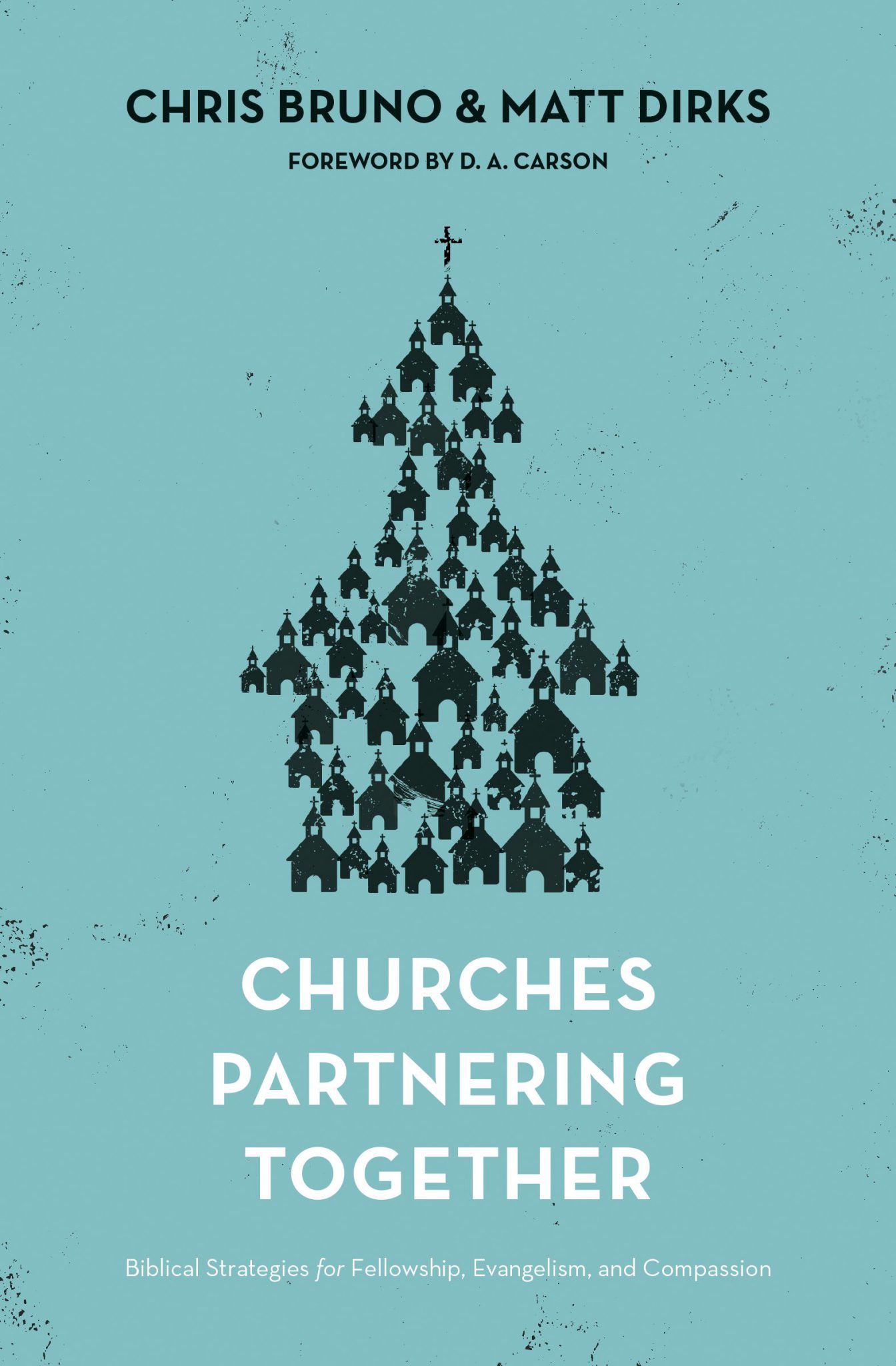I am a twin. Growing up as a twin meant that just about everything I owned my brother also claimed. My parents insisted on uniformity. We had the same pairs of shoes, the same kind of bicycle, and for the most part the same friends. We literally held everything in common. So I guess partnership has always felt normal to me.
Therefore, my immediate thought when reading Churches Partnering Together: Biblical Strategies for Fellowship, Evangelism, and Compassion was, What is the big deal? The idea of churches partnering together seems obvious. But who am I kidding? I know just as well as any other pastor that this is a big deal. In fact, the very conversation about churches partnering together can cause churches to drift apart. There is a deep-seated (albeit veiled) bias within the psyche of many congregations that distrusts the one down the street. We view them as inferior or less “pure” or “healthy” than our own church. Sure, partnership sounds great, so long as those we associate with look like us and do things the same way we do.
Beyond Squishy Ecumenism
This pervasive attitude flies against the picture Chris Bruno and Matt Dirks thoughtfully and positively present to us in Churches Partnering Together. Let’s be clear up front: these men are not advocating an ecumenism that erodes gospel truths. Far from it. They are simply stating that churches who know the gospel, love the gospel, and preach the gospel with a view to seeing conversions have a compelling motivation to link arms together.

Churches Partnering Together: Biblical Strategies for Fellowship, Evangelism, and Compassion
Chris Bruno and Matt Dirks
Churches Partnering Together: Biblical Strategies for Fellowship, Evangelism, and Compassion
Chris Bruno and Matt Dirks
Churches with different personalities, perhaps even from different denominations, who often reach out to different geographic or demographic spheres would do well to consider that their most immediate priority in boosting the gospel’s witness in their community should be to strengthen their relationship with other gospel ministries in that community.
Biblical Model
Bruno (director of the Antioch School Hawai‘i and pastor for discipleship and training at Harbor Church in Honolulu) and Dirks (pastor for teaching and leadership at Harbor Church) have set out a thoughtful examination of the New Testament picture of partnership. They suggest that Paul’s collection of the Jerusalem offering was not only an act of partnership but is in fact a model for partnership. The determination with which the apostle worked to collect that offering implies that churches have a duty to partner for the glory of God. The churches in Corinth, Rome, Ephesus, and Philippi were bound to one another as they identified with a common concern for the church in Jerusalem. It was Paul’s concern that these individual congregations recognize that as gospel churches they are a part of something bigger than themselves. Paul pleaded with the churches, then, to consider their less fortunate brothers and sisters, and he commended those who did so as “partners in the gospel.” Even though there was no formal denominational apparatus holding these first churches together, there was certainly a strong sense that the early church understood both the burden and the joys of working in partnership.
With that helpful framework in mind, Bruno and Dirks cast a vision for church partnerships birthed out of a commitment to friendly and voluntary cooperation that is motivated by a desire to glorify God. More than just telling the stories of fruitful partnerships, Bruno and Dirk persuasively implore us to pursue the potential that exists when churches start working together to accomplish a common and clear goal.
More than Denominational Agreement
Churches Partnering Together goes much further than simply exhorting denominational engagement. The book has little to say about denominationalism, in fact. Instead, Bruno and Dirks challenge their readers to look beyond the horizon of denominationalism to think strategically with other gospel-centered churches. For the sake of the witness of the church and the display of Christ’s glory, churches should seek faithful partners to enable them to do more to make disciples of all nations (Matt. 28:18–20) than they could alone.
Start by gathering a fellowship of pastors and, when you do, begin implementing missional goals together. This book drives us to excitement about the potential that partnership brings—starting a biblical counseling center; reaching an unreached neighborhood; planting a new church; sending and supporting a missionary.
Timely and Needed
I believe Bruno and Dirks are touching on a timelier issue than we might at first appreciate when we sit down to read their book. There is an appetite today among many churches and pastors for cooperation. The emergence of cooperative efforts such as The Gospel Coalition, Acts 29, Together for the Gospel, the development of gospel partnerships in Europe, and the resurgence of gospel cooperation among young Southern Baptists in the United States provide anecdotal support for the view that there is a growing and prevailing desire for partnership among this generation of church leaders. Churches Partnering Together provides helpful advice and guidance for church leaders to do just that. After all, its aim is to help church leaders satisfy, in a constructive way, that growing appetite for cooperation.
Whether you are leading a small congregation in a rural setting or a large church in a big city, read this book. I hope it stirs that appetite for cooperation among church leaders and, in doing so, helps them think wisely and creatively about how to build constructive relationships in order to put the glory of God on display and increase the capacity of any one church to make disciples.

































